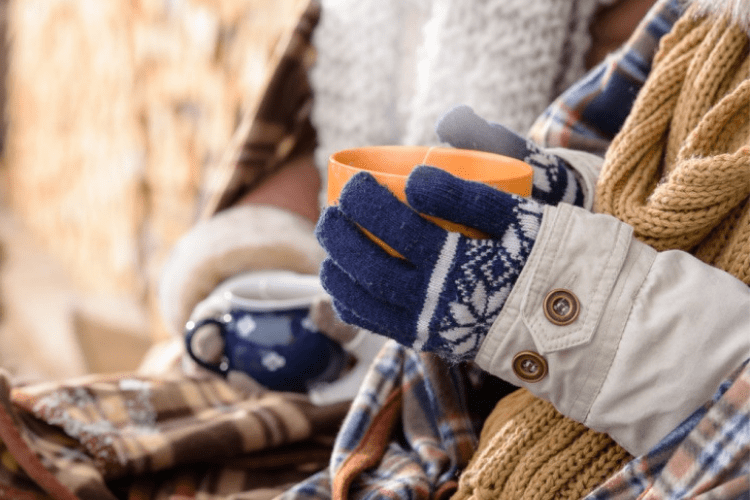How to Layer Clothes for Cold Weather
We harbor a lot of negative associations with winter weather. Stepping out of the house in the morning to start our cars or shovel the front walk can be a harsh reminder of just how cold winter air can feel. For all but the hearty few, winter time is a season for seeking shelter; a time to hide from the inclement weather like we’ve evolved to do. Indeed, intentionally recreating outside during the winter can feel unnecessary at best. But unfortunately, many of us don’t have the option of living somewhere without seasons. For those of us trapped in the North, adapting to the winter, and finding ways to keep ourselves occupied in it, is a necessity, not just an elective.

So you’ve decided to take winter by the reins, and step out into the blustery bleakness with confidence. Have no fear. Playing outside in the winter weather can be fun, safe, and entirely enjoyable with some proper preparation. And there’s nothing that makes spending time outside in the winter enjoyable like some proper layering. Here’s our guide to choosing the right clothes to keep you happy this winter. Who knows? You might even start to appreciate the cold air.
Cold Weather Clothing Guide Overview
Layering is essentially a rule of thirds: Lightest layer close to the skin, a middle layer for insulation, and an outer layer for protecting against wind and precipitation. You will inevitably modify this system to adapt to new forecasts, but for the most part, a basic three-layer kit will keep you warm and dry in all but the harshest conditions, especially if you keep moving. Remember the old adage: Cotton Kills. Try to avoid wearing clothing that is made out of non-wicking material like cotton. Cotton has a low insulation value and is dangerously good at trapping moisture.
How to Layer Clothes for Cold Weather: Baselayers
Base layers should fit snuggly, and be the thinnest piece of your layering system. When shopping for base layers, try to pick out tops and bottoms that are either polypropylene or, ideally, merino wool. Both wick moisture away from your skin which will keep you warm and dry. Merino wool is especially good at this task. Wool also has an incredible warmth-to-weight ratio, especially compared to materials like cotton.
Having multiple thicknesses of base layers will help you adapt to the changing weather conditions in a more customizable way. Thin base layers are best for aerobic activity. Your body will do most of the heavy lifting when it comes to staying warm, while your baselayers are left to do the job of wicking away sweat. On the other end of the spectrum, heavy-duty layers will keep you insulated best during more sedentary activities. For everyday use, a medium weight base layer is usually ideal.

How to Layer Clothes for Cold Weather: Midlayers
Midlayers are where you’ll get most of your insulation. This is a great place for an insulating layer like a down jacket, fleece jacket, or synthetically insulated jacket. Down jackets are expensive, but the best at keeping your body heat trapped. They’re also incredibly light. If a down jacket is out of your price range, try shopping for a synthetic-insulated jacket. They’re cheaper, and lack some durability as compared to down, but do a great job at keeping you warm. If the weather is looking (relatively) mild, considering exchanging your insulating midlayer for a fleece jacket.
If you’re like most people, your legs will stay much warmer than the rest of your body. Most likely, you’ll find that a midlayer isn’t necessary for your legs, especially if you’re moving around. Too many layers on your bottom half can feel cumbersome and constricting. But if your activity level will be sedentary, consider a layer of down pants, or heavier fleece pants as a midlayer for your legs.
How to Layer Clothes for Cold Weather: Outerwear
On sunny, still, and crisp days, a base layer and insulating layer may be sufficient for keeping you warm and happy. However, never underestimate the power of a slight winter breeze. Wind, let alone precipitation and wind, can cripple your ability to stay outside for longer periods of time. That’s why having a nice shell for both your upper and lower body can make a huge difference. If you have money to spend, consider jackets and pants that have a waterproofing membrane, like Gore-Tex or Pertex, or a windproofing membrane like Windstopper. Avoid using cheap rain jackets if at all possible: Inexpensive waterproof clothing tends to trap moisture and make you muggy and wet. If a cheaper jacket is the only option available, make sure to open up armpit zips, or take the jacket off completely when aerobically active to avoid sweating.
A Note on 3-in-1 Jackets
A lot of manufacturers, like Columbia Sportswear, make 3-in-1 jackets that include all of the above-mentioned items of clothing. These are great options for winter layering on the cheap, although they lack some of the breathability and versatility of customizing your own layering system.






